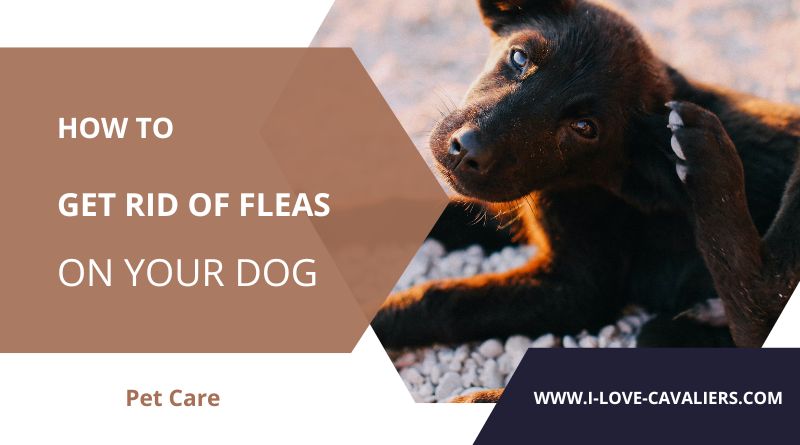 Pet owners are rightly concerned about how to get rid of fleas on their dogs. Most dogs are allergic to the saliva of these blood-sucking parasites. Prolonged infestation can result in anemia due to blood loss.
Pet owners are rightly concerned about how to get rid of fleas on their dogs. Most dogs are allergic to the saliva of these blood-sucking parasites. Prolonged infestation can result in anemia due to blood loss.
Fleas also cause itching and possible infections for human pet owners!
As fleas are most troublesome in the warmer summer months, now is the perfect time to talk about how to avoid fleas on your dog and what treatments are available if you can’t avoid them.
Preventing Fleas
There are a variety of products that help kill fleas on dogs, thereby reducing the chance that your pet will bring fleas into your home.
Flea collars are perhaps the simplest preventative measure. The active ingredient embedded in the collar is immediately effective. Most flea collars last approximately 6 months.
Flea collars are generally safe for most dogs (even puppies), having only a few side effects.
One of the distinct advantages of flea collars is that, in the event of any skin irritation or other adverse reaction, the collar can immediately removed. You can’t “un-do” topical or oral flea medications.
Topical liquid flea medications are typically sold in prepackaged, individual portions based on your dog’s weight. The liquid is applied directly to your dog’s skin (generally between the dog’s shoulders where the dog cannot lick the treatment site).
The medication is absorbed through your dog’s skin and into the circulatory system, which then kills fleas when they bite your dog.
Though many dogs tolerate liquid flea medicine well, possible side effects may include skin irritation, vomiting, diarrhea, muscle tremors and seizures. Topical “spot-on” treatments generally only provide protection for 1 to 3 months.
Oral pills or chewable tablets are an alternative to topical liquid treatments. These can provide protection against fleas for up to 12 weeks.
Regardless of your preferred method of treating fleas on dogs, it is important to consult your veterinarian about the different active ingredients in flea medications.
Be sure to let your vet know if you can other animals in your home, as some canine flea medicine is highly toxic to cars!
Treating Fleas in Dogs
If you find fleas on your dog, wash your dog with a flea shampoo, and groom his coat with a fine-toothed flea comb. Continue a regular grooming schedule over the next few weeks to make sure you’ve eliminated both mature fleas as well as any eggs that may hatch later.
If necessary, your veterinarian can prescribe medication that works quickly to kill fleas within a short time frame (a different medication than long-term preventative treatments).
Fleas around the House
Sometimes, the more difficult problem is generally how to get rid of fleas in your home! Fleas that your dog brought inside may have laid eggs in your carpet, furniture and bedding.
Wash all of your dog’s bedding (as well as your own bedding if your dog is sleeps with you).
Vacuum floors and upholstered furniture thoroughly, and throw the vacuum bag away immediately. You may wish to apply a flea powder over your carpets or spread an insecticide spray before vacuuming.
Stay diligent with your cleaning protocol for 3 or 4 months to effectively remove all fleas from your home.
Fleas in the Yard
Flea-proofing the great outdoors seems like a daunting task! How can you possibly prevent fleas in your neighbor’s yard from crossing over into your dog’s playground?
Obviously there are local pest control services that can spray your yard, if you’re willing to expose your pets to the commercial products they use.
Alternatively, there are more natural approaches.
Cavalier King Charles Spaniel breeders and owners of Kalama Cavaliers Kennels offer these great tips on their blog:
“I plant rosemary, and lemon balm around the perimeter of our home. After a good mowing and weed-wacking (like yesterday), I will sprinkle Diatomacious Earth all over the lawn, flower beds and anywhere my dogs spend time. More about DE here: https://richsoil.com/diatomaceous-earth.jsp I also purchased the yard and lawn care concentrate from Wondercide (uses a high concentrate of Essential Oils) and sprayed the perimeter of the yard.” Thanks for the great suggestions, Jerry & Jina!
Other articles:
How to Give your Dog a Bath at Home
